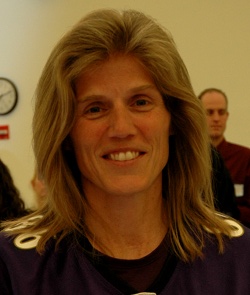
It generates an annual turnover of 90 million. The pearl industry in French Polynesia is based on exploitation of natural stocks of the blacklip pearl oyster (Pinctada margaritifera). persica and the neighbouring Indian Ocean black-lip pearl oysters. The long-term accumulation of genetic differences likely resulted from the allopatric divergence between P. The hatchery-based enhancement performed in one of the sampled islands may also have affected population genetic structure. The scantiness of suitable habitats most likely restricted the distribution of this lineage originating the observed chaotic genetic patchiness. Microsatellite data, used here to assess the spatial scale of realized dispersal of Persian Gulf black-lip pearl oysters, revealed significant genetic structure among islands distant of only a few dozen kilometres.


persica belongs to a clearly divergent ESU and groups with specimens from Mauritius (P. Mitochondrial COI-based analyses indicated that P. persica, this lineage is absent from continental locations and can only be found on a few islands of the Persian Gulf. Despite the long pelagic larval phase of P. zanzibarensis) to the French Polynesia (P. This species complex includes seven lineages that show a wide distribution ranging from the Persian Gulf (Pinctada margaritifera persica) and Indian Ocean (P. Here we focused on black-lip pearl oysters from the Persian Gulf that are thought to belong to the Pinctada margaritifera complex given their morphological affinities. Growing body of evidence, however, suggests that marine populations can differentiate over small spatial scales. Marine organisms with long pelagic larval stages are expected to exhibit low genetic differentiation due to their potential to disperse over large distances. margaritifera selective breeding and its genetic conservation in French Polynesia. Our results add up to other studies describing the Marquesas archipelago as a hotspot for biodiversity and differentiation, with some of the highest levels of endemism and vicariance found among marine species worldwide and provide precious information on available genetic resources for the implementation of P. This differentiation cannot not be only attributed to geographic distance and aquaculture status, but likely to hydrodynamic barriers allowing vicariant events to take place. However, while the Australes population was genetically similar to non-exploited populations of the Tuamotu, the Marquesas populations were highly differentiated from the rest of the populations. We found that individuals from both archipelagos belonged to P. The present study aimed at validating the phylogenetic status and investigating genetic attributes of populations from the only two non-exploited archipelagos of French Polynesia, the Marquesas archipelago, and the Australes archipelago, never analysed before. This emphasizes the necessity to characterize the genetic diversity and differentiation within natural and exploited populations, to carefully select putative parental populations. margaritifera in French Polynesia poses new challenges for the industry, particularly regarding the maintenance of genetic diversity in the hatchery stocks.


The ongoing development of hatcheries for P. The French Polynesian islands are internationally known for their black pearls, produced by culture of the black lipped pearl oyster Pinctada margaritifera. Furthermore, analysis from corrected genotypes demonstrates significant genetic differentiation for one population from the other 2. Once corrected, all populations appeared at HWE, demonstrating that null alleles were responsible for the initial disequilibrium of the populations. After 3 re-amplification steps, with modified primer sets, all loci were corrected for null alleles. After amplification with original primer pairs, the 3 populations exhibited null alleles, absence of structure, and significant departure from HWE for all 3 loci due to heterozygote deficiencies. We checked for the occurrence of null alleles at 3 microsatellite loci in 3 populations of black-lipped pearl oyster, Pinctada margaritifera, using a step-by-step method to re-amplify homozygotes and null individuals with redesigned primer pair combinations. In bivalves, heterozygote deficiencies and departures from Hardy-Weinberg equilibrium (HWE) in microsatellite analysis are common and mainly attributed to inbreeding, genetic patchiness (Walhund effect), or null alleles.


 0 kommentar(er)
0 kommentar(er)
